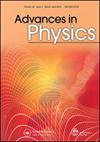From quantum chaos and eigenstate thermalization to statistical mechanics and thermodynamics
IF 13.8
1区 物理与天体物理
Q1 PHYSICS, CONDENSED MATTER
引用次数: 1541
Abstract
This review gives a pedagogical introduction to the eigenstate thermalization hypothesis (ETH), its basis, and its implications to statistical mechanics and thermodynamics. In the first part, ETH is introduced as a natural extension of ideas from quantum chaos and random matrix theory (RMT). To this end, we present a brief overview of classical and quantum chaos, as well as RMT and some of its most important predictions. The latter include the statistics of energy levels, eigenstate components, and matrix elements of observables. Building on these, we introduce the ETH and show that it allows one to describe thermalization in isolated chaotic systems without invoking the notion of an external bath. We examine numerical evidence of eigenstate thermalization from studies of many-body lattice systems. We also introduce the concept of a quench as a means of taking isolated systems out of equilibrium, and discuss results of numerical experiments on quantum quenches. The second part of the review explores the implications of quantum chaos and ETH to thermodynamics. Basic thermodynamic relations are derived, including the second law of thermodynamics, the fundamental thermodynamic relation, fluctuation theorems, the fluctuation–dissipation relation, and the Einstein and Onsager relations. In particular, it is shown that quantum chaos allows one to prove these relations for individual Hamiltonian eigenstates and thus extend them to arbitrary stationary statistical ensembles. In some cases, it is possible to extend their regimes of applicability beyond the standard thermal equilibrium domain. We then show how one can use these relations to obtain nontrivial universal energy distributions in continuously driven systems. At the end of the review, we briefly discuss the relaxation dynamics and description after relaxation of integrable quantum systems, for which ETH is violated. We present results from numerical experiments and analytical studies of quantum quenches at integrability. We introduce the concept of the generalized Gibbs ensemble and discuss its connection with ideas of prethermalization in weakly interacting systems.从量子混沌和本征态热化到统计力学和热力学
本文对特征态热化假说(ETH)、其基础及其在统计力学和热力学中的意义进行了教学介绍。在第一部分中,ETH作为量子混沌和随机矩阵理论(RMT)思想的自然延伸被介绍。为此,我们简要概述了经典混沌和量子混沌,以及RMT及其一些最重要的预测。后者包括可观测值的能级统计、特征态分量和矩阵元素。在此基础上,我们引入了ETH,并表明它允许人们在不调用外部浴池概念的情况下描述孤立混沌系统中的热化。我们从多体晶格系统的研究中检验本征态热化的数值证据。我们还介绍了猝灭的概念,作为使孤立系统脱离平衡的一种手段,并讨论了量子猝灭的数值实验结果。第二部分探讨了量子混沌和ETH对热力学的影响。导出了基本热力学关系,包括热力学第二定律、基本热力学关系、涨落定理、涨落-耗散关系以及爱因斯坦和昂萨格关系。特别是,量子混沌允许人们证明这些关系的个别哈密顿特征态,从而将它们扩展到任意平稳统计系综。在某些情况下,有可能将它们的适用范围扩展到标准热平衡领域之外。然后,我们展示了如何使用这些关系来获得连续驱动系统中的非平凡通用能量分布。在回顾的最后,我们简要讨论了违反ETH的可积量子系统的弛豫动力学和弛豫后的描述。本文给出了可积量子猝灭的数值实验和解析研究结果。我们引入了广义Gibbs系综的概念,并讨论了它与弱相互作用系统中预热化思想的联系。
本文章由计算机程序翻译,如有差异,请以英文原文为准。
求助全文
约1分钟内获得全文
求助全文
来源期刊

Advances in Physics
物理-物理:凝聚态物理
CiteScore
67.60
自引率
0.00%
发文量
1
期刊介绍:
Advances in Physics publishes authoritative critical reviews by experts on topics of interest and importance to condensed matter physicists. It is intended for motivated readers with a basic knowledge of the journal’s field and aims to draw out the salient points of a reviewed subject from the perspective of the author. The journal''s scope includes condensed matter physics and statistical mechanics: broadly defined to include the overlap with quantum information, cold atoms, soft matter physics and biophysics. Readership: Physicists, materials scientists and physical chemists in universities, industry and research institutes.
 求助内容:
求助内容: 应助结果提醒方式:
应助结果提醒方式:


